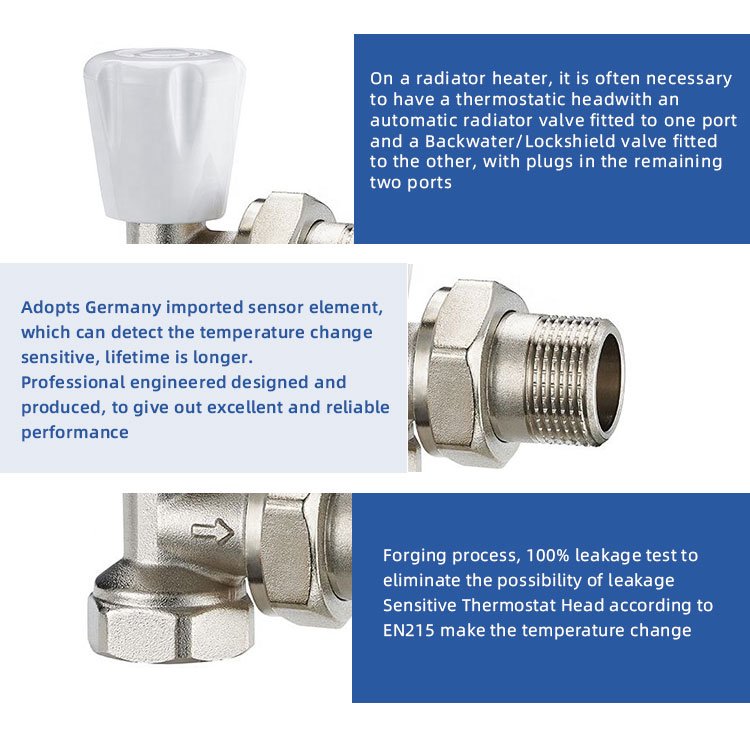Pain Point: If your radiator is suddenly hissing, clanking, or releasing steam, you might panic. Is it normal? Or is something dangerously wrong? A steam radiator acting up can lead to wasted energy, higher bills, or even safety risks like burns or leaks. Worse, if you mistake a steam system for a hot-water one, you might install the wrong valves (like non-steam-compatible thermostatic radiator valves), causing permanent damage.
Solution: Don’t guess. This guide will show you how to identify a steam radiator, fix common issues, and pick the right valves to keep your system safe and efficient.
Snippet Paragraph
To confirm if your radiator is steam-powered, check for these signs: steam hissing sounds, a single pipe connecting to the radiator (common in one-pipe systems), or a steam-rated valve (like a one-pipe steam thermostatic radiator valve). Steam systems also lack a water pump and operate at higher pressures than hot-water systems. Always verify compatibility before installing valves.
Why Keep Reading?
Misdiagnosing your radiator type can lead to costly repairs or replacements. Below, we’ll break down how steam radiators work, troubleshoot scary scenarios (like steaming but not overheating), and help you choose reliable parts—like IVALVECRAFT’s high-quality valves—to avoid headaches.

Is It Bad If My Radiator Is Steaming?
Steam radiators should release some steam during normal operation, especially when starting up. But excessive or constant steaming signals trouble. Here’s why:
- Wasted Energy & Higher Costs: Constant steam escape means your boiler works harder, spiking energy bills.
- Safety Risks: Uncontrolled steam can scald or damage walls/floors.
- Valve Damage: Non-steam valves (like standard thermostatic radiator valves) can corrode or fail under steam pressure.
Fix It Fast:
- Install steam-specific valves, like a one-pipe steam thermostatic radiator valve, designed to handle high heat and pressure.
- Check for air vents clogged with mineral deposits—clean or replace them.
- Ensure your system isn’t overfilled with water, which forces excess steam into radiators.
IVALVECRAFT’s valves are tested for steam compatibility, ensuring stable pressure and flow. Pair them with professional thermostatic radiator valve installation to avoid leaks or inefficiencies.
Why Is My Car Radiator Steaming But Not Overheating?
Car radiators and home steam radiators are different systems, but both can steam without overheating. For cars:
- Coolant Leaks: A small leak might let steam escape but not trigger the overheating sensor. Check hoses and the radiator cap.
- Minor Blockages: Debris in the coolant line can create steam pockets. Flush the system.
- Faulty Thermostat: A stuck thermostat might misread temps, letting steam form without alarms.
But for home steam radiators:
Steam without overheating usually means air vents are blocked or valves aren’t closing properly. For example, a non-steam thermostatic radiator valve might jam open, letting steam rush through non-stop. Replace it with a steam-rated valve (like IVALVECRAFT’s heavy-duty options) and clean air vents annually.
Pro Tip: Always confirm valve specs. Mixing steam and hot-water parts is a recipe for breakdowns.
What Should a Steam Radiator Sound Like?
A healthy steam radiator isn’t silent, but it shouldn’t sound like a horror movie either.
Normal Noises:
- Gentle hissing when steam enters the radiator.
- Occasional clanks or pings as metal expands/contracts.
- Light bubbling as condensed water returns to the boiler.
Abnormal Noises:
- Loud banging (“water hammer”): Caused by water trapped in steam pipes. Slope pipes toward the boiler slightly.
- Constant whistling: A stuck air vent or valve. Replace vents or upgrade to a Honeywell thermostatic radiator valve for precise control.
- Gurgling: Air in the system. Bleed vents or check valve installation.
Installation Matters: Poorly installed valves amplify noise. IVALVECRAFT’s thermostatic radiator valve installation cost is competitive, and our team ensures noise-free operation with proper sealing and alignment.
Final Thoughts
Identifying a steam radiator boils down to checking pipes, sounds, and valve specs. Fixing issues fast saves money and stress—replace faulty air vents, use steam-rated valves, and avoid mixing system types. For reliable parts, IVALVECRAFT offers thermostatic radiator valves tested for steam pressure, flow stability, and easy installation.
Choose IVALVECRAFT, choose reliable partner, enjoy the high quality and best service.


